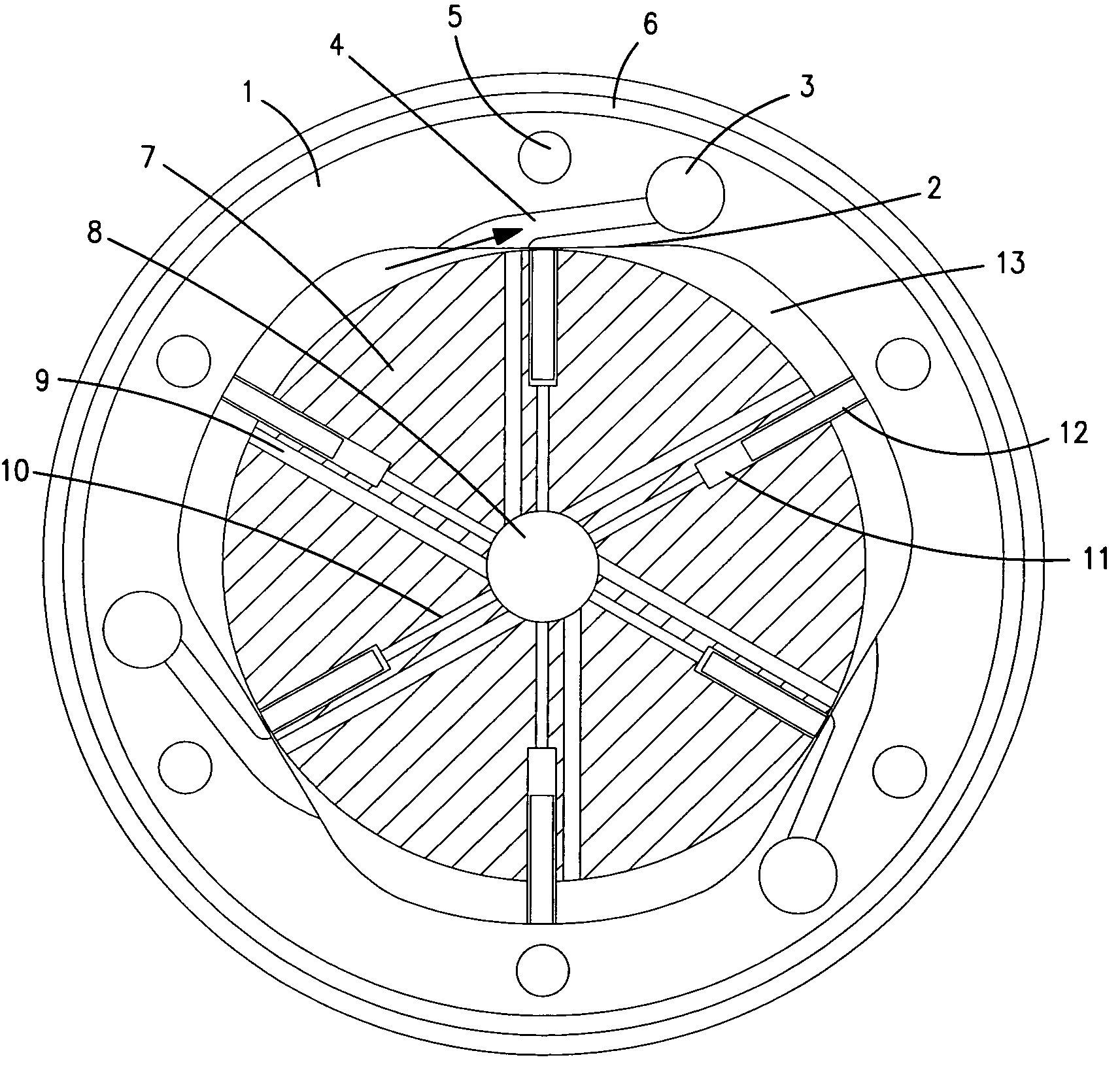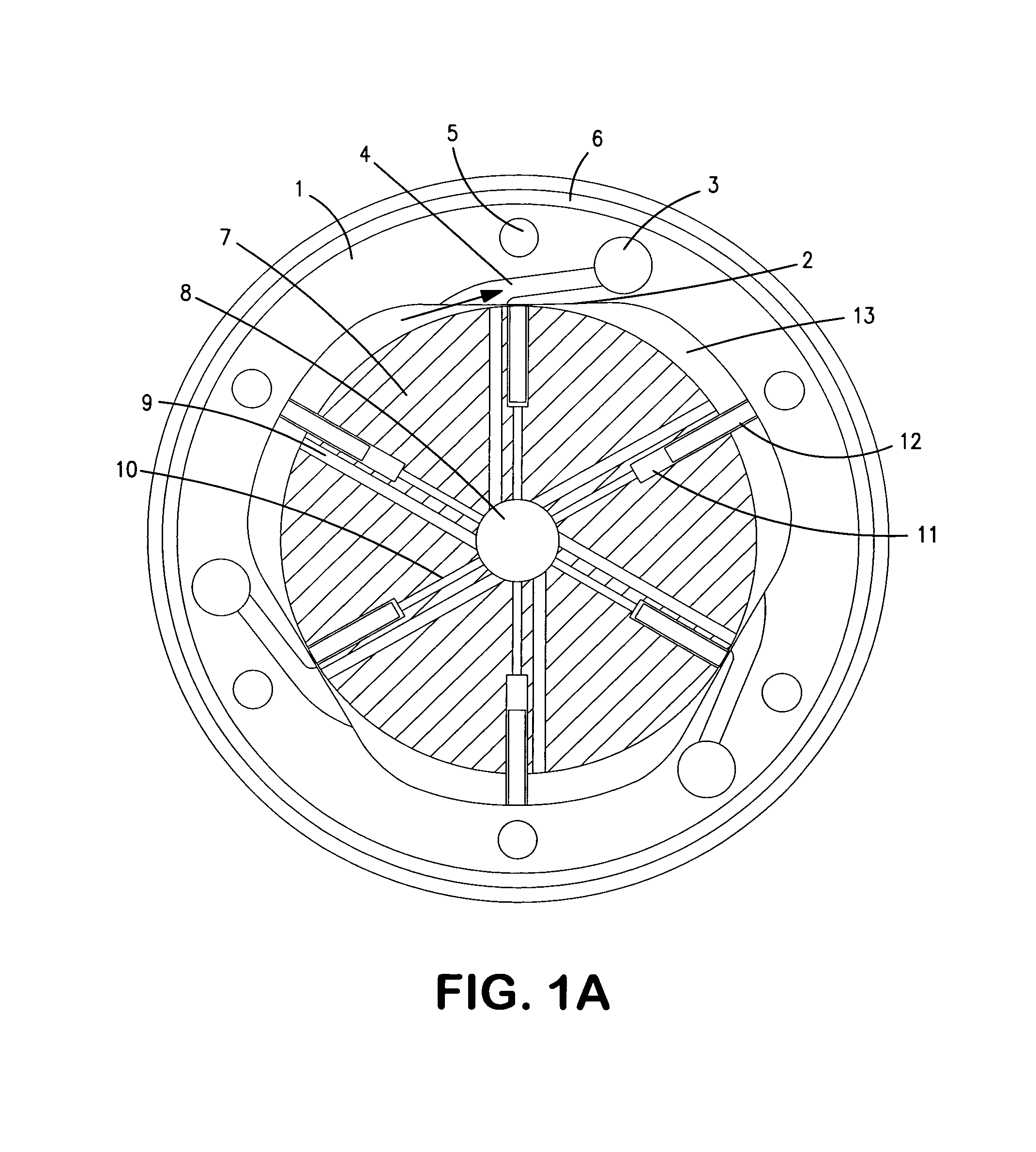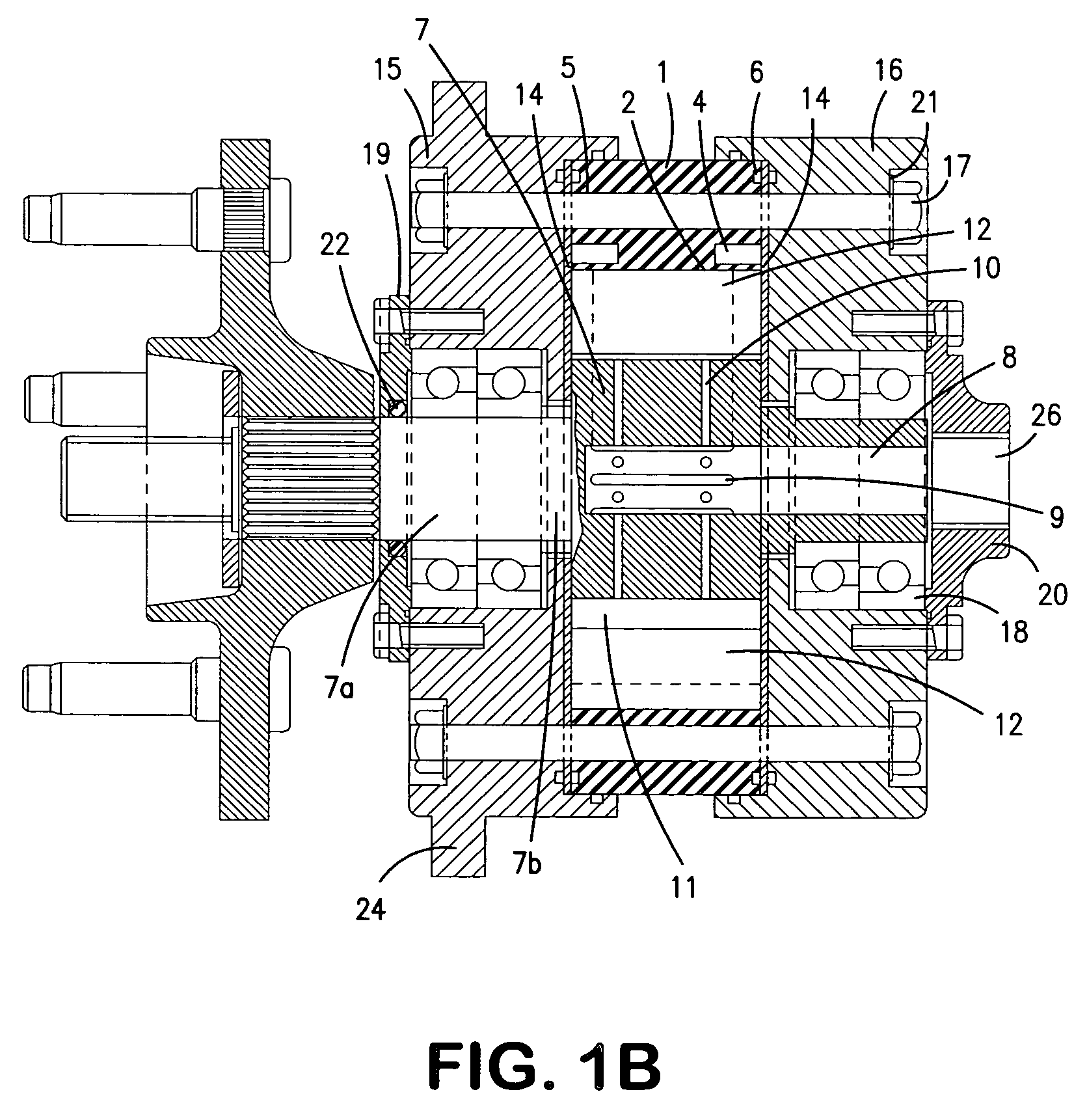Hydraulic traction system for vehicles
a technology of hydraulic traction system and vehicle, which is applied in the field of land vehicles, can solve the problems of inefficiency of conventional vane-based hydraulic motors, and achieve the effect of reducing the displacement angle of chambers and reducing the volume of chambers swep
- Summary
- Abstract
- Description
- Claims
- Application Information
AI Technical Summary
Benefits of technology
Problems solved by technology
Method used
Image
Examples
Embodiment Construction
[0025]Referring now to FIGS. 1A, 1B and 1C, the hydraulic motor of the present invention will now be described. The hydraulic motor is composed of a track ring 1. The track ring 1 has three internal cams 2, three outlet galleries 3, and three pairs of discharge ports 4, which discharge into the outlet galleries 3. The three pairs of discharge ports 4, are machined on both faces of track ring 1. Also o-ring seal groove 6, is machined on both faces of track ring 1. Track ring 1 has six bolt holes 5, for the assembly through bolt 17.
[0026]The unit has a rotor 7, which is a single component comprising both rotor 7 and a shaft 7a. The rotor 7 has a main oil gallery 8, extending from the non-drive end of the shaft to beyond the center of the rotor 7 far enough to feed the flow of high pressure hydraulic oil to the distribution galleries 9, of the rotor 7, and the oil passages 10, of the rotor 7. Rotor 7 also has six slots 11 for vanes and a free moving vane 12 in each slot. The shaft 7a h...
PUM
 Login to View More
Login to View More Abstract
Description
Claims
Application Information
 Login to View More
Login to View More - R&D
- Intellectual Property
- Life Sciences
- Materials
- Tech Scout
- Unparalleled Data Quality
- Higher Quality Content
- 60% Fewer Hallucinations
Browse by: Latest US Patents, China's latest patents, Technical Efficacy Thesaurus, Application Domain, Technology Topic, Popular Technical Reports.
© 2025 PatSnap. All rights reserved.Legal|Privacy policy|Modern Slavery Act Transparency Statement|Sitemap|About US| Contact US: help@patsnap.com



